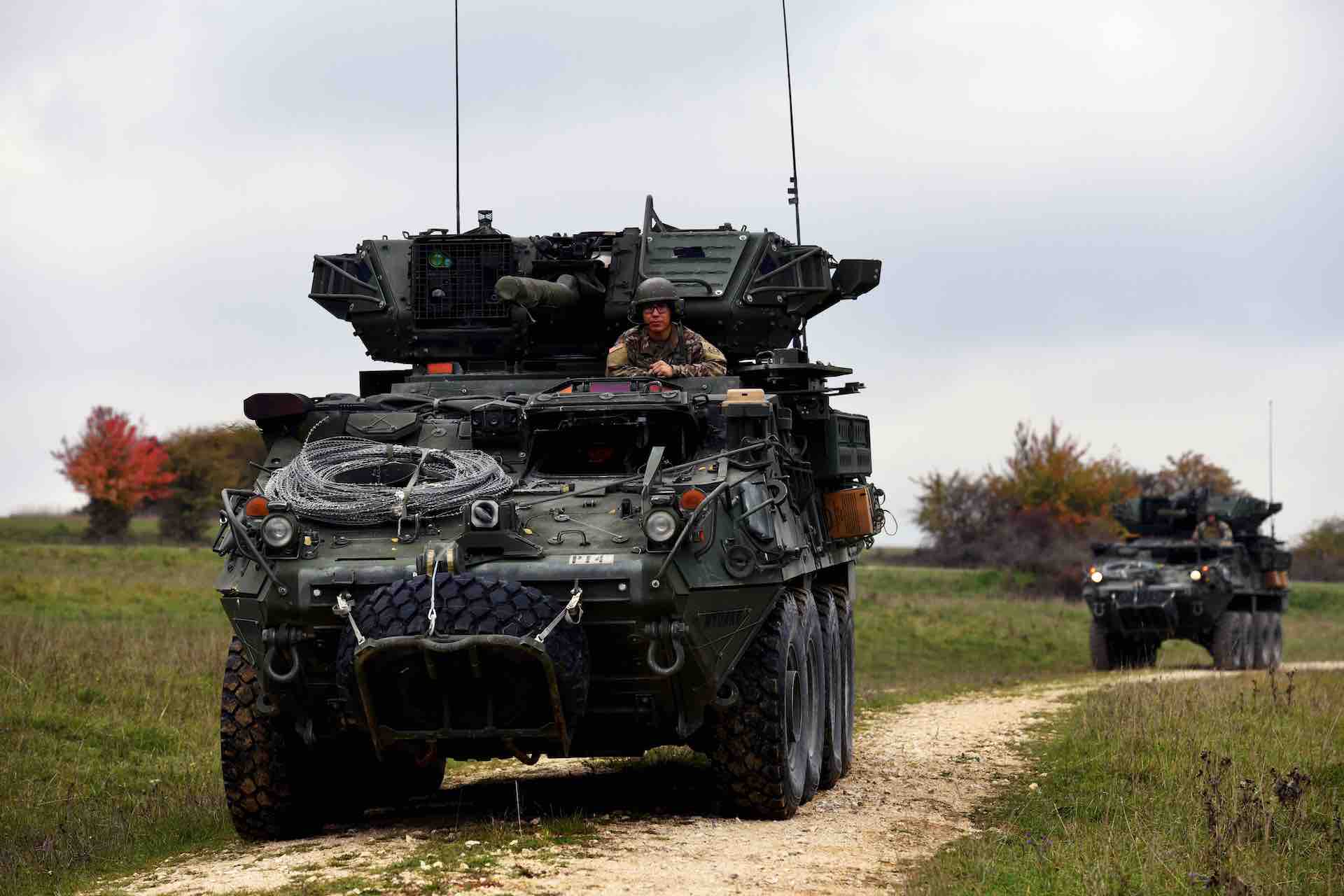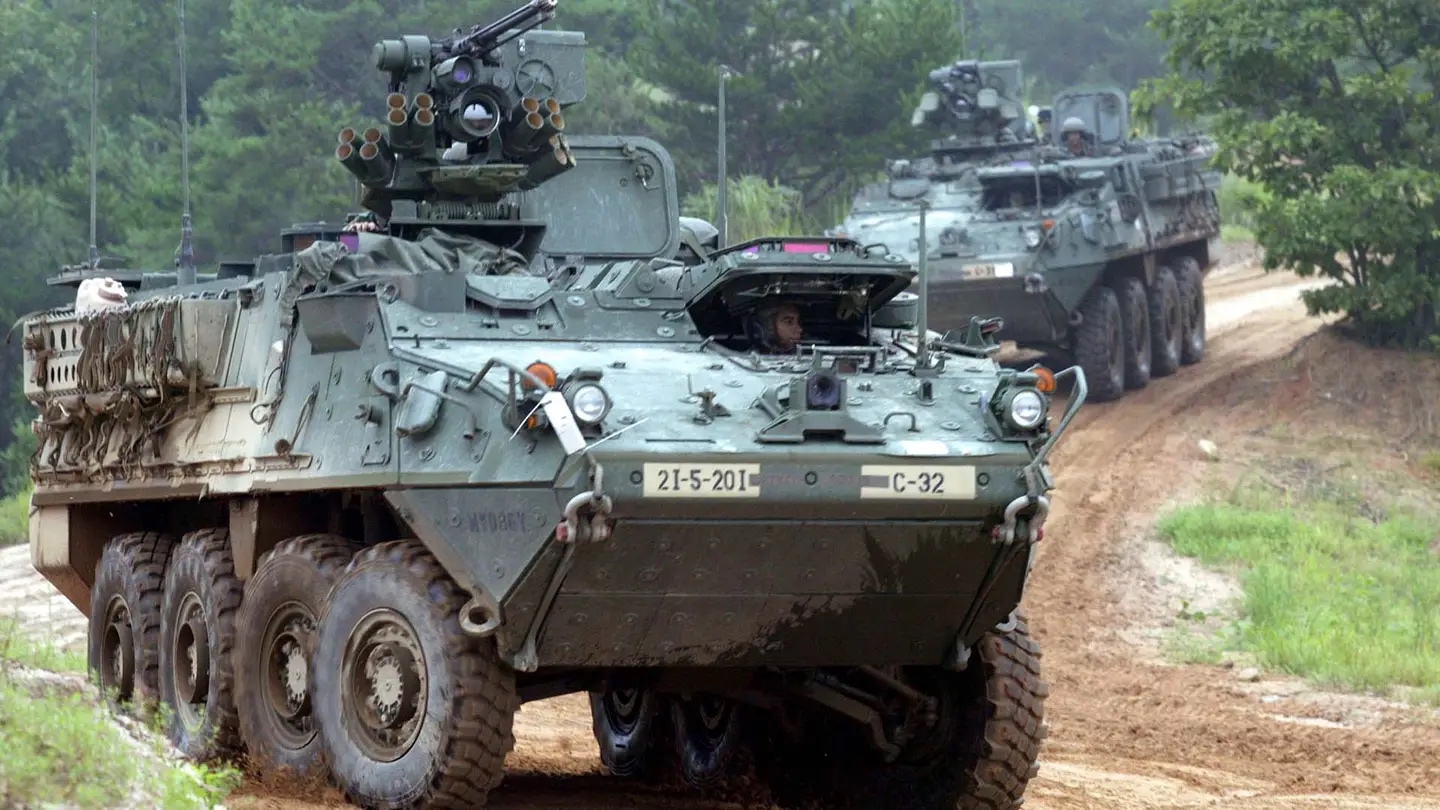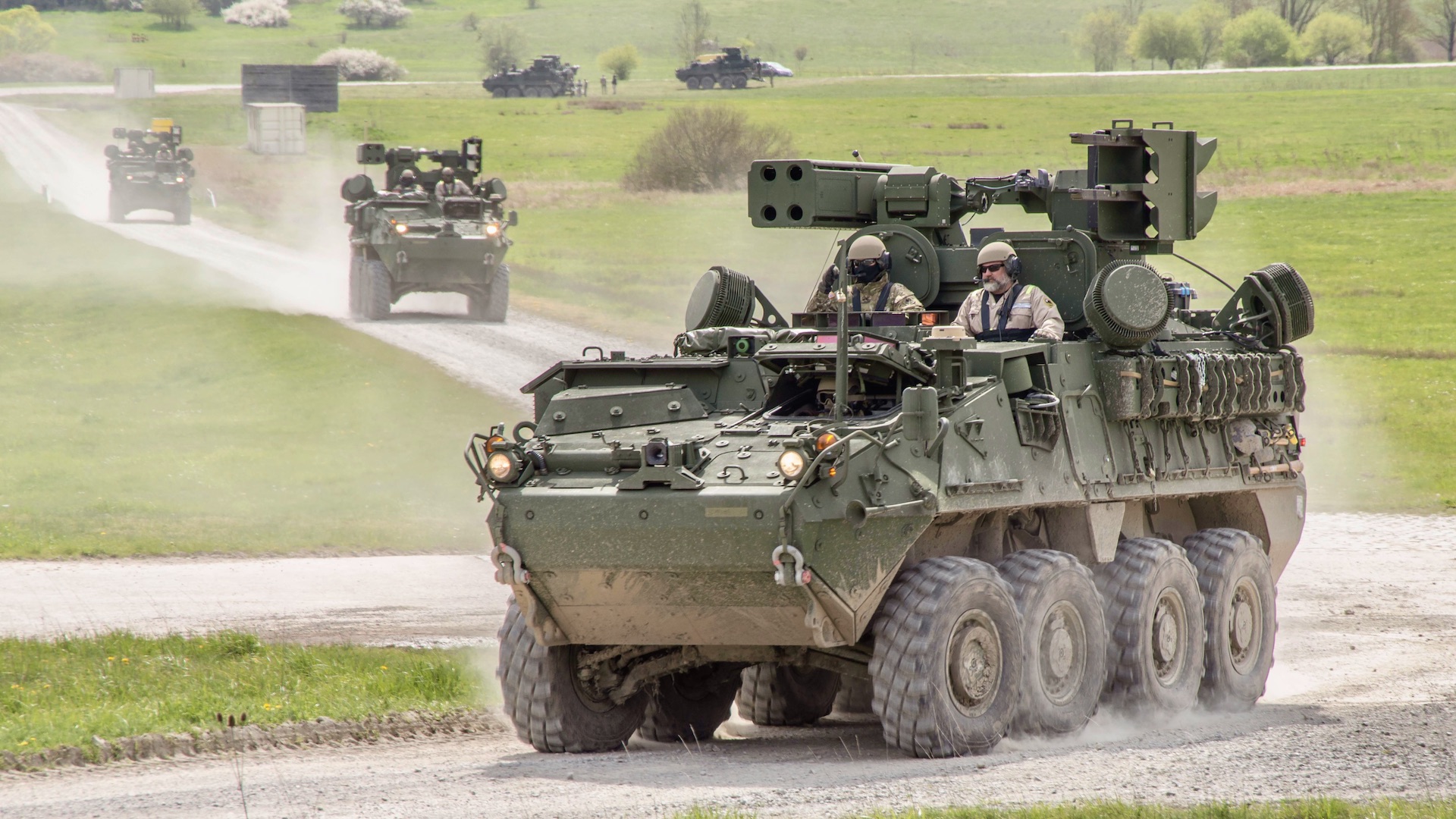The U.S. Army is interested in exploring hybrid-electric options for its 8×8 Stryker wheeled armored vehicles. The service has become increasingly concerned with developing hybrid-electric propulsion systems in recent years, which offer numerous benefits including reduced fuel usage as well as being far quieter than standard diesel engines, for its armored and unarmored vehicles as well as tanks.
The Army’s Acquisition Support Center recently released a Request for Information (RFI) on behalf of the Rapid Capabilities and Critical Technologies Office (RCCTO) relating to hybrid-electric Strykers, which contains information about what the service is looking for with regards to such a vehicle.
At this stage, the RFI stresses that the Army is specifically “seeking sources and information to identify the cost and ability to support the integration of hybrid electric capabilities on a base M1126 Stryker DVHA1 [A1- configuration Double V-hull] variant.”

Compared to the M1126 Infantry Fighting Vehicle (IFV), which first entered service in 2002 and features a 350 horsepower Caterpillar C7 engine, the M1126 Stryker DVHA1 has a more powerful, 450 horsepower Caterpillar C9 engine. The M1126 Stryker DVHA1, which the Army began fielding in 2020, also has a more robust suspension than its predecessor and full in-vehicle network.
According to the Army, the M1126 Stryker DVHA1 is designed to keep the platform in operation well into the 2050s. You can read more about the Stryker ‘family’ of vehicles, of which there are over two dozen variants, and their capabilities and armament in this past War Zone feature.

As the RFI indicates, the Army is looking to “increase automotive performance” with regard to a hybrid-electric Stryker. This specifically relates to improving “fuel efficiency, acceleration, top speed, power generation, and power storage capability… beyond the current non-hybrid baseline variant at its respective gross vehicle weight,” with “allowances for battery placement and without compromising crew compartment space.”
Other desired improvements from a hybrid-electric Stryker are also listed. This includes the ability to “generate, store, and distribute power to external assets.”
“Power architecture will supply electrical power in multiple variations to include 12VDC, 28VDC, High Voltage DC, 110VAC and 220VAC to support current and high demand energy systems.” While the RFI does not specify which “high demand energy systems” this pertains to, this would likely have benefits to a wide range of external assets; including sensors, directed energy technologies, communication suites, as well as active protection systems. As we’ve noted previously, these all tend to consume a great deal of energy, which will likely only increase in the future.

The RFI also specifies that a hybrid-electric Stryker should be able to “conduct battery only silent watch and silent mobility beyond non-hybrid baseline performance specifications.” This would have particular benefits for operators, in terms of being able to maneuver and take up positions quietly, while running off the Stryker’s battery alone. This would also help vehicles save on fuel, too.
In addition, the Army is also looking for the inclusion of “anti-idle technology and the associated optimized heating and cooling systems to reduce fuel consumption to the maximum extent possible without degrading operations or functionality while vehicle is stationary.”
In exploring all this, the Army is looking to “maximize the use of commercially available components” wherever possible, per the RFI.
At this stage, the service is not requesting invitations for bids regarding proposals on integrating hybrid-electric capabilities into an existing Stryker. However, if and when the service does look for examples of how to achieve this, one starting point may well be General Dynamics Land Systems’ (GDLS) “StrykerQB” demonstrator, which debuted at this year’s iteration of the Association of the U.S. Army’s (AUSA) main annual convention in Washington, D.C. GDLS is the prime contractor behind the Stryker family of vehicles.

As the company highlights, many of the key features of that system align with what the Army is looking for in its recent RFI.
“The StrykerQB technology demonstrator[’s]… capabilities include silent movement, silent watch and exportable electric power via a hybrid diesel-electric power pack to enhance vehicle survivability and mobility,” according to GDLS. “It is protected by an integrated Active Protection System and advanced electronic architecture with cyber defense.”
A similar demonstrator concept from GDLS which also features a hybrid-electric propulsion system, “StrykerX,” was present at the 2022 AUSA convention. Of course, other companies could offer alternatives to GDLS’s offerings should proposals for a hybrid-electric Stryker be sought by the Army.

Beyond improved performance benefits, there are also broader advantages for both the Army and industry in adapting existing Stryker vehicles for hybrid-electric propulsion.
As The War Zone has highlighted previously, modern militaries are notoriously fuel-hungry. Moving fuels for vehicles operating in high-risk environments during an actual conflict poses significant challenges, and the Army has invested heavily in various logistical platforms to help improve fuel supplies in such a context. Moving large fuel shipments in short order can also be extremely expensive, and, in a conflict scenario, each galon of fuel represents a finite and precious commodity. Being able to reduce fuel consumption wherever possible is critical here, and converting fuel-hungry Stryker convoys to hybrid-electric propulsion would be one way for the Army to conserve its fuel supplies in the future.
Integrating hybrid-electric propulsion into Stryker vehicles also makes sense in light of the Army’s broader environmental objectives. Under its climate strategy, the service aims to field “purpose-built” hybrid-drive tactical vehicles by 2035, and, by 2050, field fully electric tactical vehicles. The strategy aims to slash the Army’s greenhouse gas emissions by 50 percent of its 2005 levels by 2030.

There is also an important commercial dimension to all this, too. Given that Strykers are increasingly being sold to the U.S.’s allies and partners — as well as being donated to Ukraine — converting existing vehicles to hybrid-electric propulsion, as well as potentially creating an all-new hybrid-electric model, would likely be attractive to both existing and potential foreign customers.
In light of these factors, it’s no secret that the Army is interested in introducing hybrid-electric propulsion systems and auxiliary power-generation systems on its armored and unarmored vehicles beyond just Strykers, and industry manufacturers have responded by offering demonstrators of various kinds as a result.
This extends beyond vehicles to tanks as well. GDLS’s next generation Abrams X main battle tank demonstrator — which could be the starting point for the future M1E3 Abrams — features a hybrid conventional-electric propulsion system, in large part to align with the Army’s wider climate strategy but also to offer similar battlefield advantages to hybrid-electric Strykers (i.e., improved performance and noise reduction).

“From a requirement standpoint, we have not specified hybrid-electric as a technical solution that must be included” Geoffrey A. Norman, director of the Next Generation Combat Vehicles Cross Functional Team, United States Army Futures Command, revealed of the Abrams modernization strategy at the AUSA 2023 convention. However, “a hybrid electric solution might be the best technical approach,” he said.
Whatever comes of the Army’s recent RFI on hybrid-electric Strykers, it’s yet another example of the service’s broader interest in moving towards a mix of diesel and electricity for its vehicles and tanks in the near term.
Contact the author: oliver@thewarzone.com
